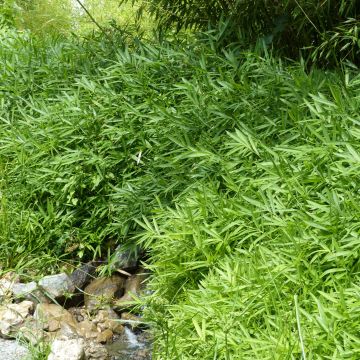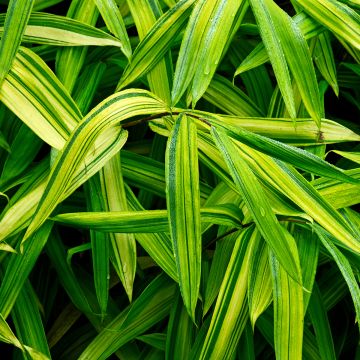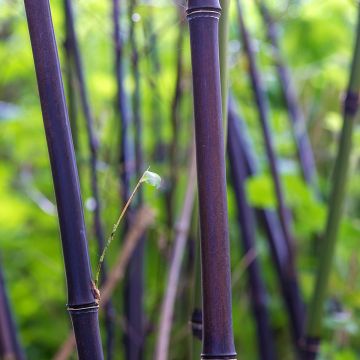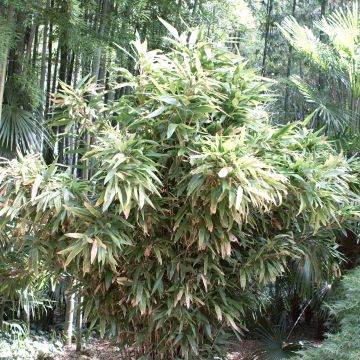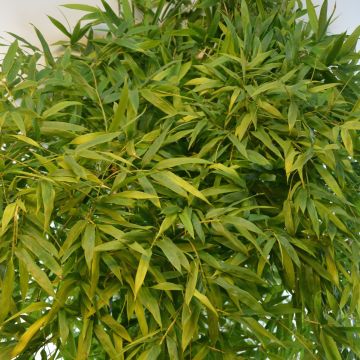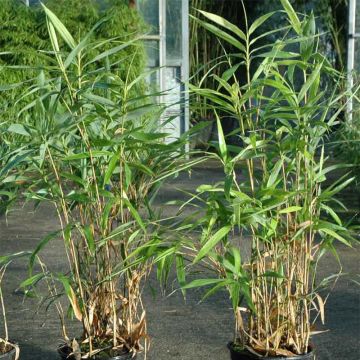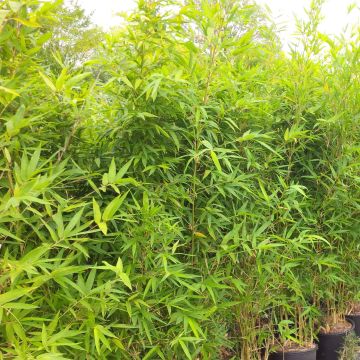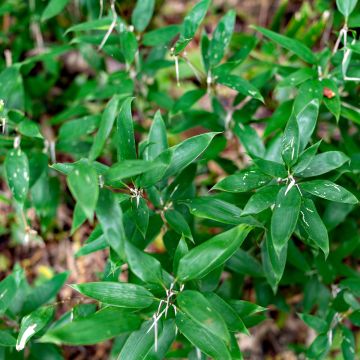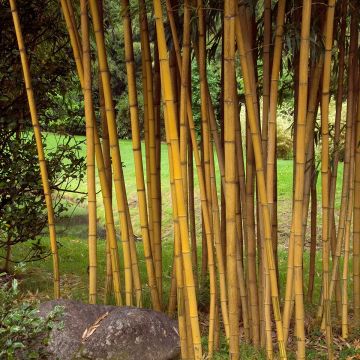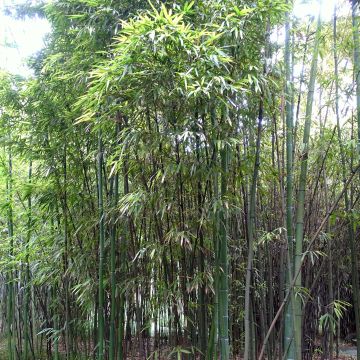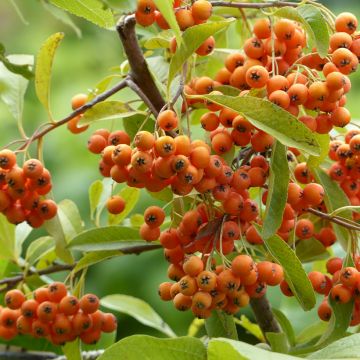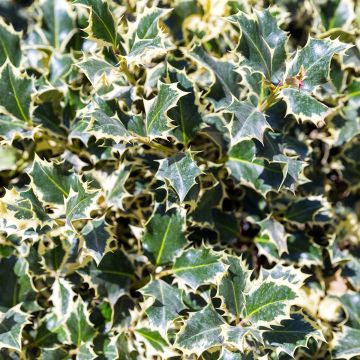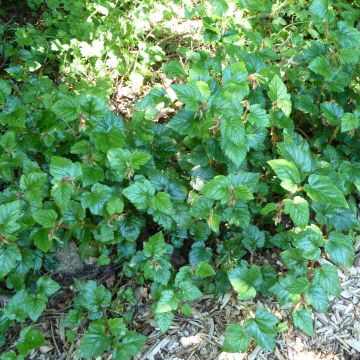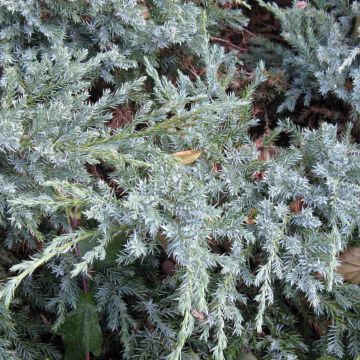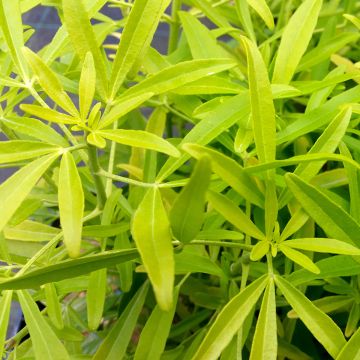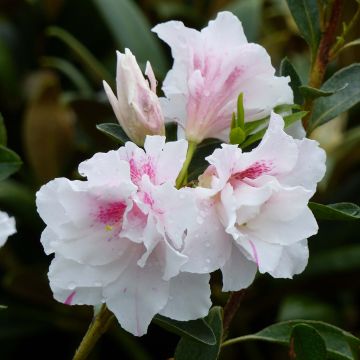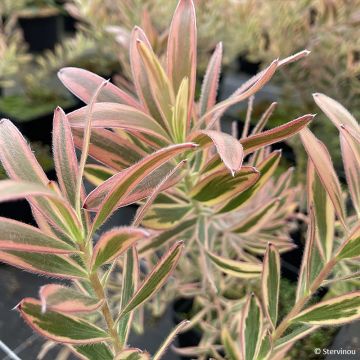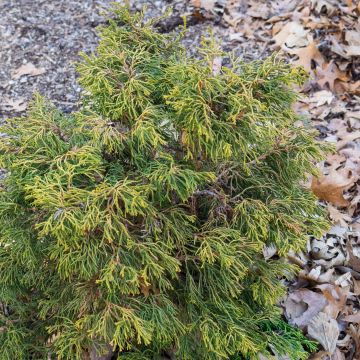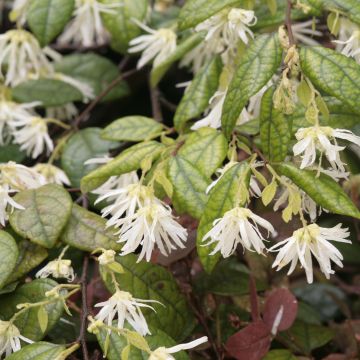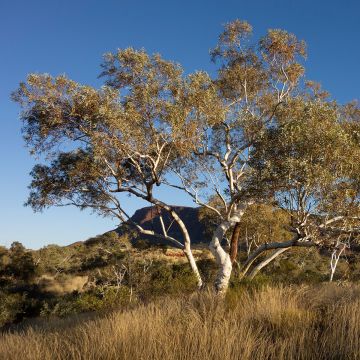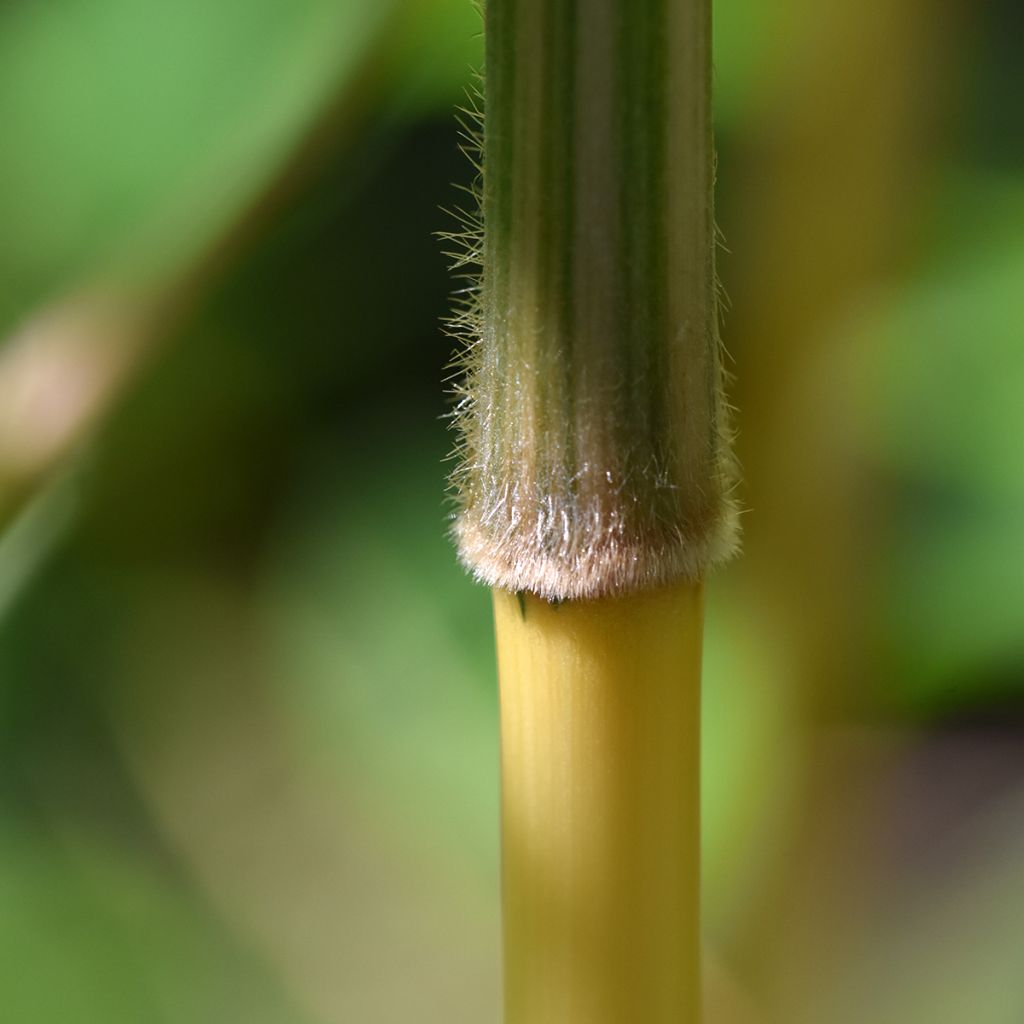

Semiarundinaria yashadake f. kimmei
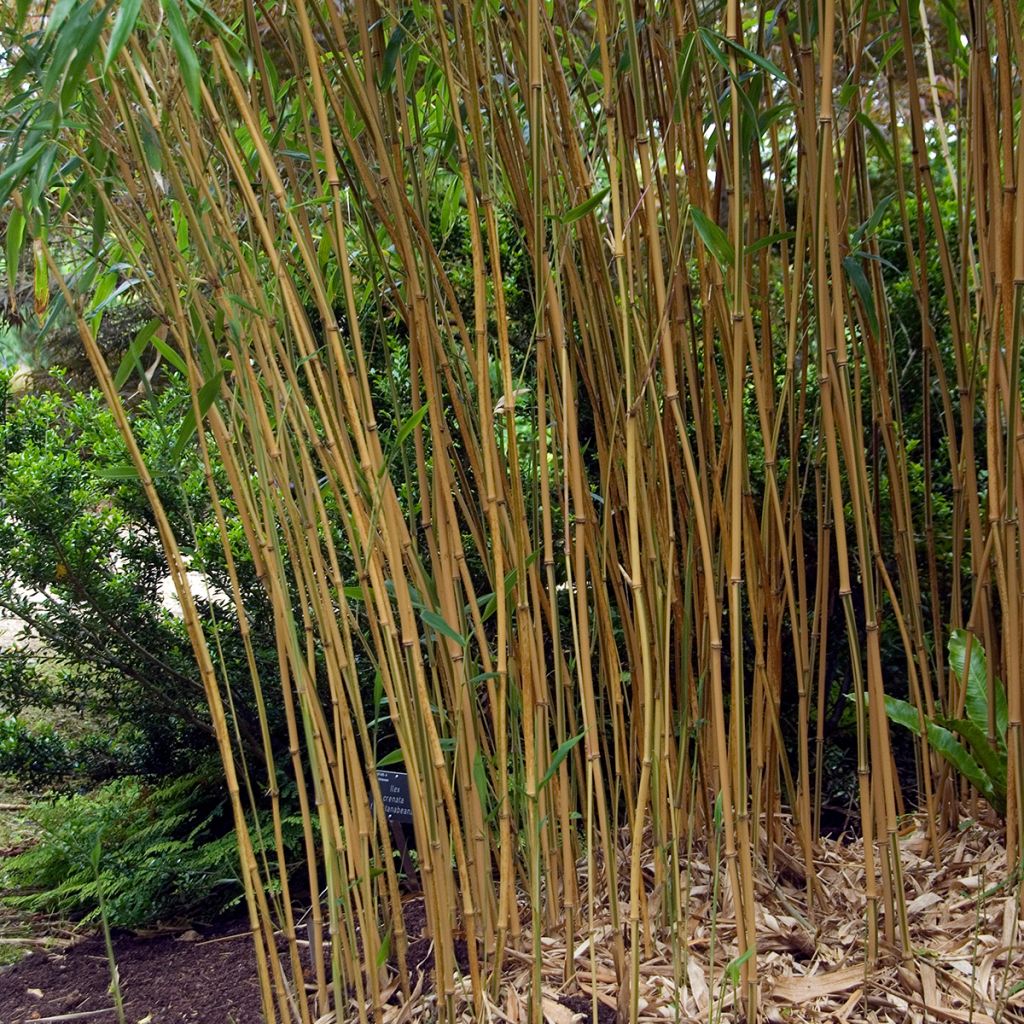

Semiarundinaria yashadake f. kimmei
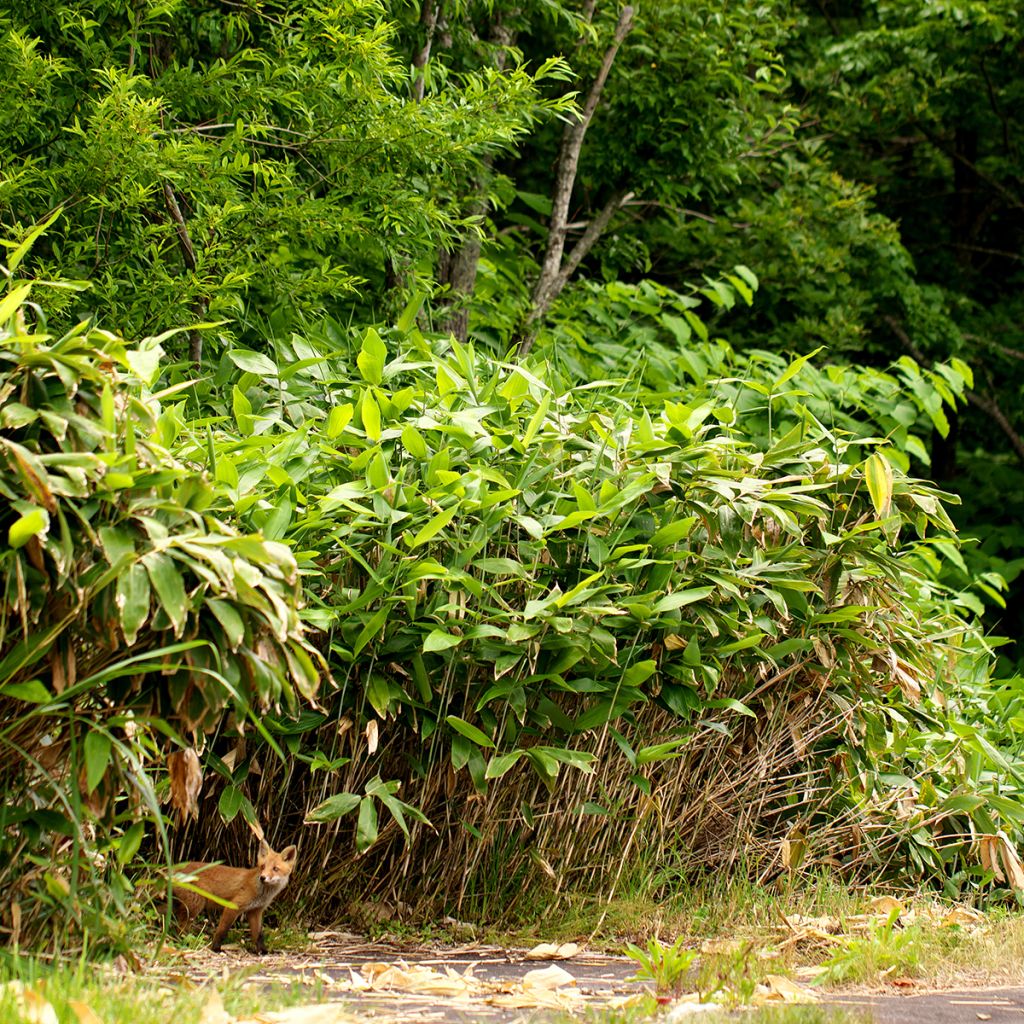

Semiarundinaria yashadake f. kimmei
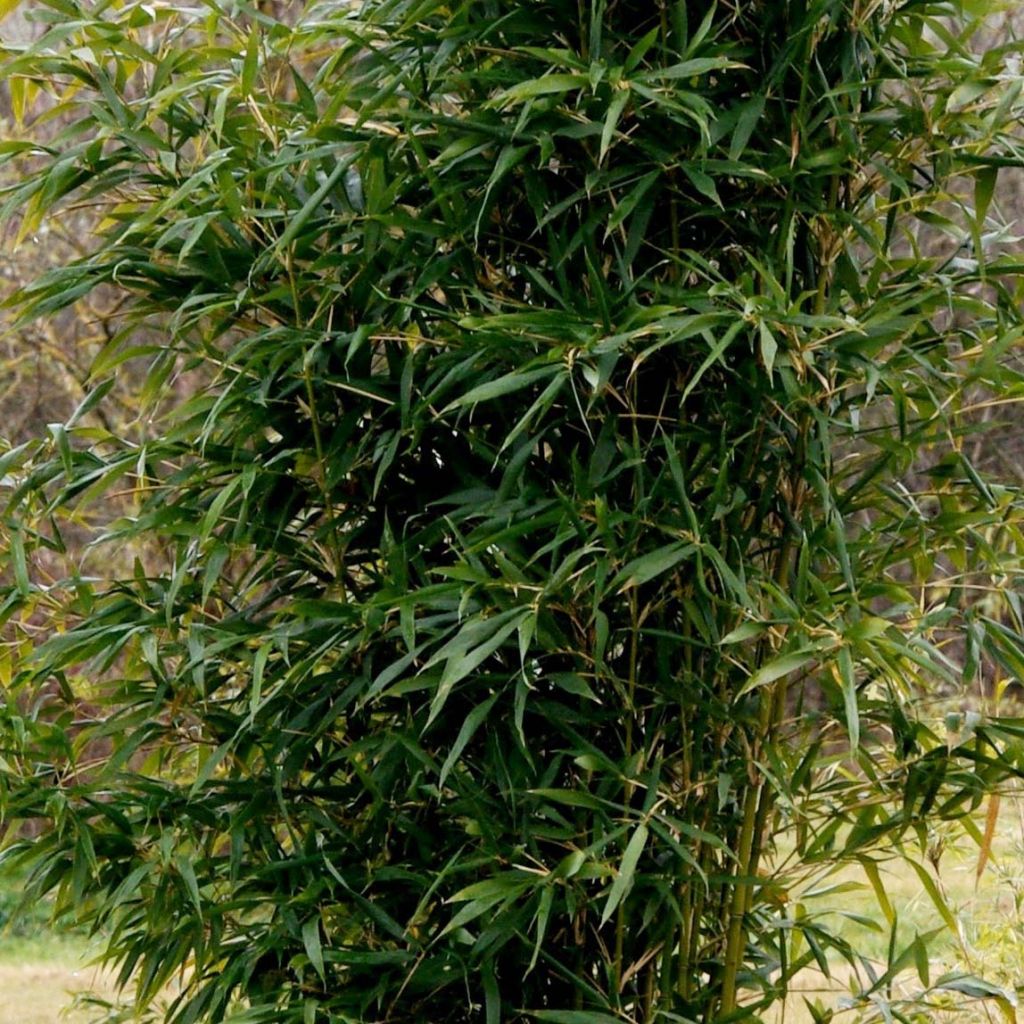

Semiarundinaria yashadake f. kimmei
Semiarundinaria yashadake f. kimmei
Semiarundinaria yashadake Kimmei
Kimmei Bamboo
This item cannot be shipped to the selected country
Oversize package delivery charge from €6.90
More information
Schedule delivery date,
and select date in basket
This plant carries a 24 months recovery warranty
More information
We guarantee the quality of our plants for a full growing cycle, and will replace at our expense any plant that fails to recover under normal climatic and planting conditions.
Oversize package: home delivery by special carrier from €6.90 per order..
Express home delivery from €8.90.
Does this plant fit my garden?
Set up your Plantfit profile →
Description
Semiarundinaria yashadake f. kimmei, sometimes called red bamboo, is a variety that will appeal to collectors. This bamboo with medium stature is chosen for its graceful habit, in a tall, airy clump, but especially for the fantastic colour of its canes. Its dense crown hangs in large, evergreen panicles, displaying elegance and beauty with its slender canes that transition from bright yellow to dark red, with a coppery tone, depending on the season, exposure, and age. This bamboo will make a statement in the garden as part of a group, hedge, or isolated clump, as well as on the terrace or balcony in a container. Prune its foliage to fully appreciate the beauty of the canes!
Belonging to the Poaceae or Gramineae family, Semiarundinaria yashadake Kimmei is a Japanese bamboo. It has an upright habit with a cascading crown. Its growth is relatively slow, often taking time to establish and cannot tolerate waterlogged, chalky, and/or dry soils. Reaching a height of 3 to 5 m, it forms wide, spreading clumps with a span of 2.50 to 3 m, and laterally extends through its shallow, trailing rhizomes, which are relatively easy to control. This bamboo develops relatively thin, straight, and perfectly cylindrical canes, measuring 1.5 to 2 cm (1in) in diameter. These canes rise and bear long, flexible branches along their entire length, at the nodes. The young canes are yellow with green stripes, then they turn yellow-copper in summer when exposed to sunlight. With age, they tend to turn red or even become purplish in winter on mature plants. The foliage of this bamboo is evergreen to at least -15°C (5°F). It is dense and flexible, composed of large light green leaves, sometimes variegated with yellow, and lanceolate in shape. The sheaths of the canes are deciduous.
Undoubtedly the star of Asian-inspired gardens, bamboo fits into numerous styles, from the most contemporary to the most exotic, including natural gardens and water gardens. When planted alone, Semiarundinaria yashadake f. kimmei creates a true focal point in the centre of a lawn or a small garden, adding height and lushness to the overall design. We recommend installing a rhizome barrier to limit its spread. Its density makes it an excellent candidate for creating a majestic hedge along a pathway in a large garden, or as an effective and elegant privacy screen at the edge of a property, especially when planted in fertile and moist soil. Bamboo varieties complement each other very well, so choose varieties with similar vigour but different coloured canes. They are always perfect near water features as they appreciate the moisture. If you plant your bamboo alongside a body of water, it is imperative to install a rhizome barrier to prevent the tough ends of the rhizomes from penetrating the liner of your pond. You can also grow it in a large pot to adorn your terrace or balcony.
Report an error about the product description
Semiarundinaria yashadake f. kimmei in pictures
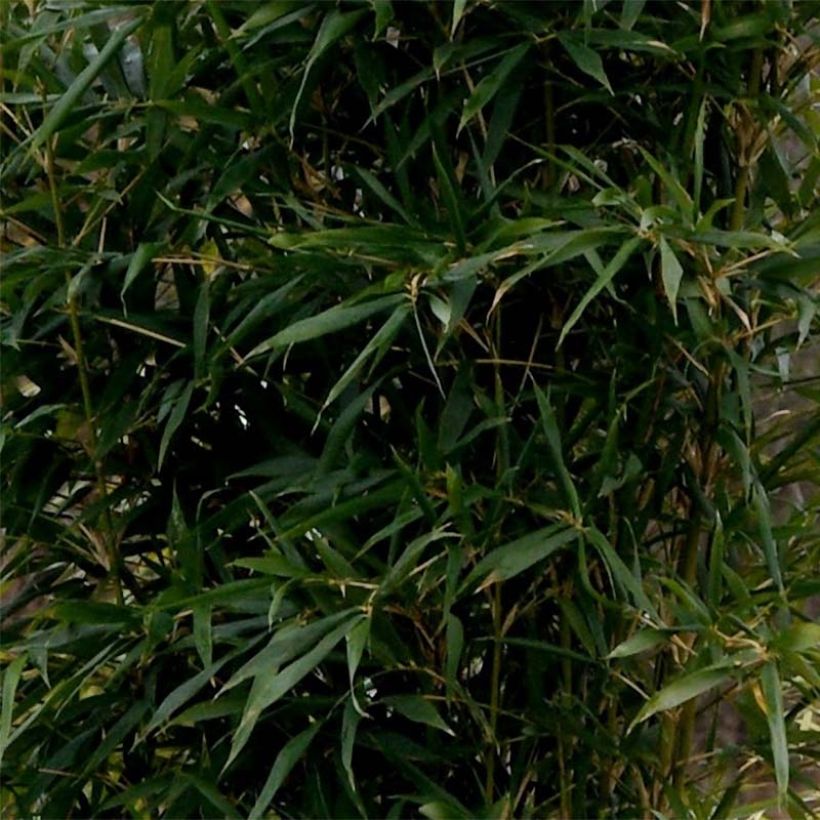

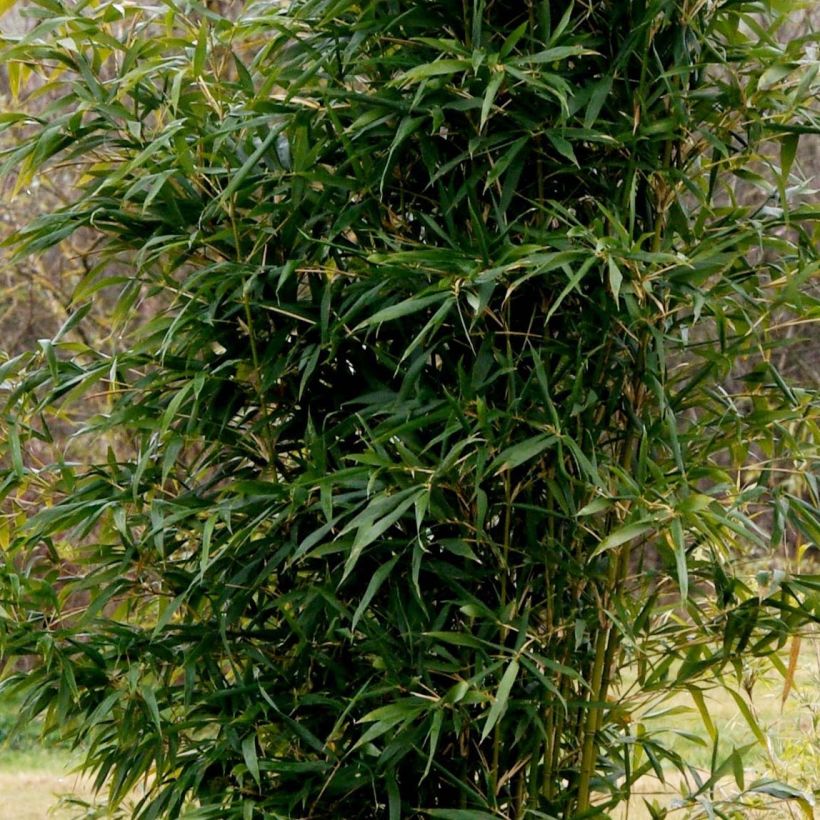

Plant habit
Foliage
Botanical data
Semiarundinaria
yashadake
Kimmei
Poaceae
Kimmei Bamboo
East Asia
Other Spreading Bamboo
Planting and care
Semiarundinaria yashadake f. kimmei is a bamboo which is rather difficult to grow if the conditions do not suit it. Ordinary, neutral-to-acid soil devoid of limestone will suit it, but its preference is for deep, light, humus-rich and moist soil. It does not like excess water or overly wet soil, the soil must be well-drained. Lighten the soil in your garden by incorporating leaf compost, ericaceous soil, and coarse sand if necessary. On the other hand, it shows excellent hardiness, tolerating temperatures down to -20°C (1°F). This bamboo thrives in partial shade as well as in the sun, but it is in a sunny position that the colour variations of its canes will be revealed, you can prune the lower branches to expose the canes to the sun. It is best to plant this bamboo in late summer or autumn, to ensure optimal rooting and development. During planting, it is advisable to install a rhizome barrier in order to limit its spreading area. Propagation can be done by rootstock cutting or division. The only maintenance required is to remove dead canes between April and September. An application of organic fertilizer can be applied at the base of the bamboo in spring.
Planting period
Intended location
Care
This item has not been reviewed yet - be the first to leave a review about it.
Evergreen shrubs
Haven't found what you were looking for?
Hardiness is the lowest winter temperature a plant can endure without suffering serious damage or even dying. However, hardiness is affected by location (a sheltered area, such as a patio), protection (winter cover) and soil type (hardiness is improved by well-drained soil).

Photo Sharing Terms & Conditions
In order to encourage gardeners to interact and share their experiences, Promesse de fleurs offers various media enabling content to be uploaded onto its Site - in particular via the ‘Photo sharing’ module.
The User agrees to refrain from:
- Posting any content that is illegal, prejudicial, insulting, racist, inciteful to hatred, revisionist, contrary to public decency, that infringes on privacy or on the privacy rights of third parties, in particular the publicity rights of persons and goods, intellectual property rights, or the right to privacy.
- Submitting content on behalf of a third party;
- Impersonate the identity of a third party and/or publish any personal information about a third party;
In general, the User undertakes to refrain from any unethical behaviour.
All Content (in particular text, comments, files, images, photos, videos, creative works, etc.), which may be subject to property or intellectual property rights, image or other private rights, shall remain the property of the User, subject to the limited rights granted by the terms of the licence granted by Promesse de fleurs as stated below. Users are at liberty to publish or not to publish such Content on the Site, notably via the ‘Photo Sharing’ facility, and accept that this Content shall be made public and freely accessible, notably on the Internet.
Users further acknowledge, undertake to have ,and guarantee that they hold all necessary rights and permissions to publish such material on the Site, in particular with regard to the legislation in force pertaining to any privacy, property, intellectual property, image, or contractual rights, or rights of any other nature. By publishing such Content on the Site, Users acknowledge accepting full liability as publishers of the Content within the meaning of the law, and grant Promesse de fleurs, free of charge, an inclusive, worldwide licence for the said Content for the entire duration of its publication, including all reproduction, representation, up/downloading, displaying, performing, transmission, and storage rights.
Users also grant permission for their name to be linked to the Content and accept that this link may not always be made available.
By engaging in posting material, Users consent to their Content becoming automatically accessible on the Internet, in particular on other sites and/or blogs and/or web pages of the Promesse de fleurs site, including in particular social pages and the Promesse de fleurs catalogue.
Users may secure the removal of entrusted content free of charge by issuing a simple request via our contact form.
The flowering period indicated on our website applies to countries and regions located in USDA zone 8 (France, the United Kingdom, Ireland, the Netherlands, etc.)
It will vary according to where you live:
- In zones 9 to 10 (Italy, Spain, Greece, etc.), flowering will occur about 2 to 4 weeks earlier.
- In zones 6 to 7 (Germany, Poland, Slovenia, and lower mountainous regions), flowering will be delayed by 2 to 3 weeks.
- In zone 5 (Central Europe, Scandinavia), blooming will be delayed by 3 to 5 weeks.
In temperate climates, pruning of spring-flowering shrubs (forsythia, spireas, etc.) should be done just after flowering.
Pruning of summer-flowering shrubs (Indian Lilac, Perovskia, etc.) can be done in winter or spring.
In cold regions as well as with frost-sensitive plants, avoid pruning too early when severe frosts may still occur.
The planting period indicated on our website applies to countries and regions located in USDA zone 8 (France, United Kingdom, Ireland, Netherlands).
It will vary according to where you live:
- In Mediterranean zones (Marseille, Madrid, Milan, etc.), autumn and winter are the best planting periods.
- In continental zones (Strasbourg, Munich, Vienna, etc.), delay planting by 2 to 3 weeks in spring and bring it forward by 2 to 4 weeks in autumn.
- In mountainous regions (the Alps, Pyrenees, Carpathians, etc.), it is best to plant in late spring (May-June) or late summer (August-September).
The harvesting period indicated on our website applies to countries and regions in USDA zone 8 (France, England, Ireland, the Netherlands).
In colder areas (Scandinavia, Poland, Austria...) fruit and vegetable harvests are likely to be delayed by 3-4 weeks.
In warmer areas (Italy, Spain, Greece, etc.), harvesting will probably take place earlier, depending on weather conditions.
The sowing periods indicated on our website apply to countries and regions within USDA Zone 8 (France, UK, Ireland, Netherlands).
In colder areas (Scandinavia, Poland, Austria...), delay any outdoor sowing by 3-4 weeks, or sow under glass.
In warmer climes (Italy, Spain, Greece, etc.), bring outdoor sowing forward by a few weeks.

































